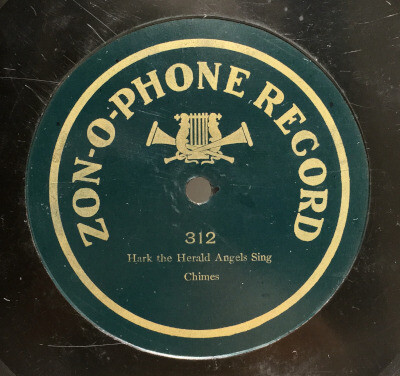
In the 19th century, the bass drum in military bands was essential. The use of bass drums continued into the earliest days of recording, but then something happened around the middle 1900s that rid bands of this long-standing tradition. Until then, all the famous bands of the era used hefty bass drum parts: Sousa, Gilmore, the Marine Band, and even small groups like Frank P. Banta’s orchestra. What was it that made the record executives make this decision?
On many records in the late 1890s into the early 1900s (particularly discs), the bass drum can be heard whacked on 1 and 3, or sometimes more eccentrically on 2 and 4. Depending on the director’s preference, the drum was placed either close to the horn or farther away. Most often this was used to emphasize the beat of the bass brass, whether it be tuba or trombone. This made for some especially rhythmic and rather full toned recordings. When played on modern electric turntables, records with this effect can sound almost as though they were recorded with a microphone.
There seemed to be an especial trend for the bass drum effect on recordings around 1900 to 1904, with dozens of band and orchestra recordings including the romping rhythm. This is a sound that we often don’t associate with the era, but at the time it was very fashionable to use the bass drum for emphasis on recordings of ragtime or other syncopated melodies.
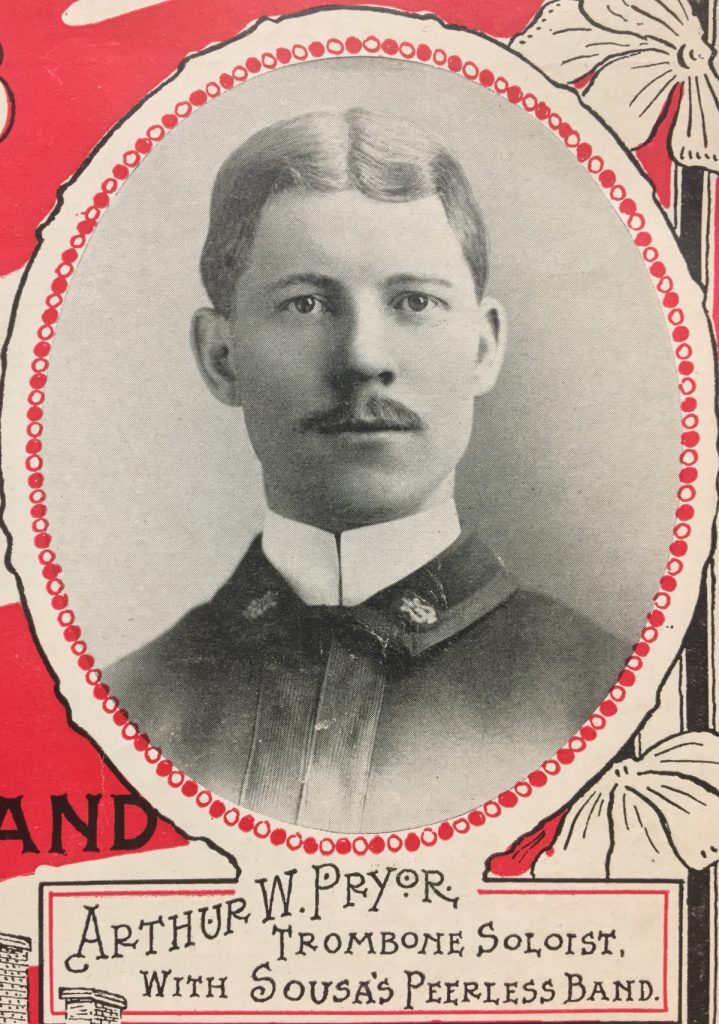
Two bandmasters with a particular fondness for this sound were Arthur Pryor and Frank P. Banta. On Victor records from 1900 to 1904, both of them included the bass drum prominently. The sound became a signature for Pryor’s band once he split from Sousa’s band in 1902. Many Pryor records of this period include an aggressive bass drum hit on 1 and 3, and the musician who played it was his younger brother Sam Otto Pryor. Sam was mentioned in Victor catalogs and supplements of the time as the preferred percussionist for Victor. He was busy working for his brother, showing off all the difficult arrangements that brother Arthur wrote for the band, and playing many syncopated melodies on the bones, snare, and bass drum.
Banta and Pryor were good friends. Banta was well known for his skill in playing ragtime, particularly for recording stars. He also used the bass drum on many of his records leading the Metropolitan orchestra. Banta led the Metropolitan orchestra originally on Berliner records, starting around 1896, but as Berliner morphed into Victor, Banta took his orchestra along.
Banta, being the musical eccentric he was, used the bass drum a little differently than Pryor. Banta was very strict with keeping good time, but his kink was a little off the common path of ragtime hipsters of the time. He thought of ragtime in four beats rather than 2, hence several of his rags being written in 4/4. With this in mind, he often had the bass drum hit on 2 and 4. This makes for some unusually funky records for 1901.
Nobody knows who Banta’s musicians were exactly. They may have been left over from the 1890s recording days, and some may have been members of Sousa’s band, but it is a safe bet that the drummer could have been Sam Pryor. It is possible that Pryor and Banta both used the younger Sam.
During this period there seemed to have been a sort of craze for percussion records. Pryor’s band recorded in 1904 a piece called “Japanese War March”, which features several types of cymbals, tom-toms, and a bass drum of course, all whacked by Sam.
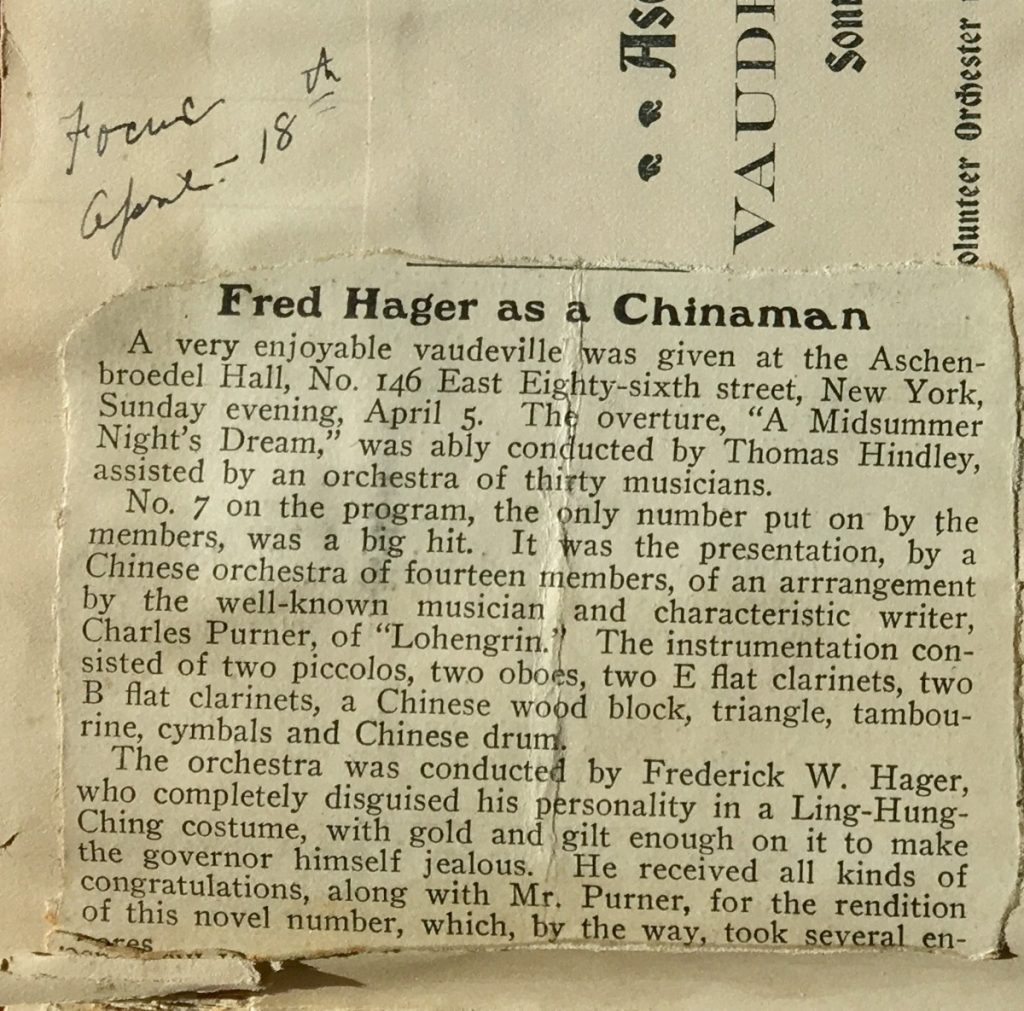
In 1900 and 1901, Fred Hager caught onto the trend and recorded several oriental themed discs for Zon-O-Phone that featured many different kinds of cymbals and chimes. Hager also recorded a piece in 1901 called “Indian War Dance” which is somewhat similar to the Pryor selection mentioned above, but includes a lot more yelling from the orchestra as Hager’s younger brother Jimmy whacks away at a pair of thumpy tom-toms.
This craze also translated into Hager’s live performances with the band; he saved a few programs in his scrapbook documenting shows where he and the orchestra dressed up in Chinese costumes and played “Lo-hen-gren.” Concerts such as this were calculated to show off Hager’s closest friends in the band, those being Justin Ring, clarinetist Theodore Pusinelli, and his young brother Jimmy, with all of them playing wind instruments and various percussive things.
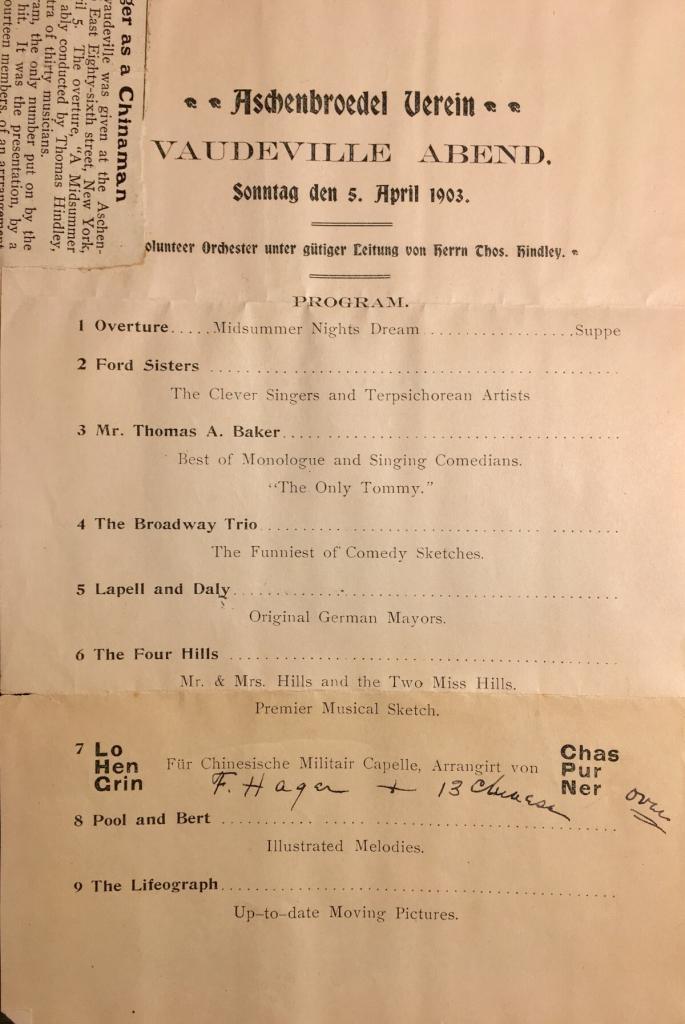
In the earliest days of the Zon-O-Phone, Hager wasn’t shy with the bass drum, utilizing it the same way that Pryor and Banta were doing. With this in mind it wouldn’t come as much as a surprise that records exhibiting percussion instruments became popular. Records such as chimes and xylophone selections had been popular since the very beginning of recording, and generally they remained popular enough in the first years of the 20th century, though they faded after 1915.
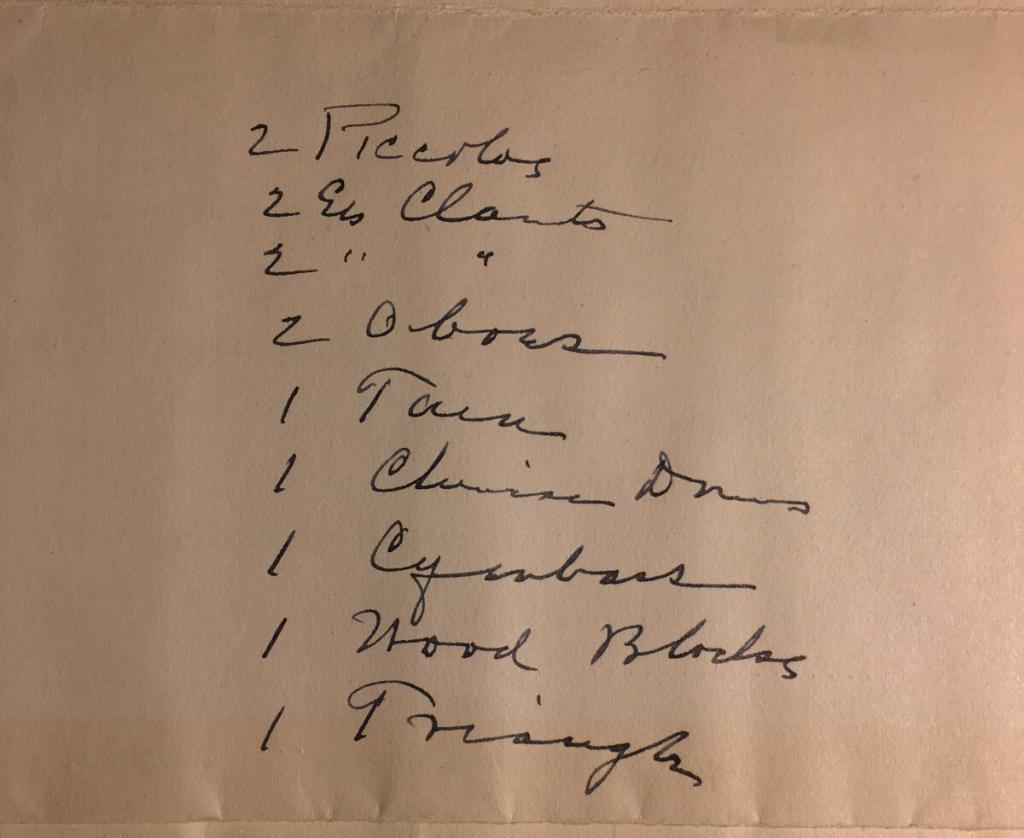
But why did the bass drum disappear from records? It is almost impossible to know exactly why Pryor, Hager, and all the other studio leaders abandoned the effect, but there are many reasons that could be surmised. Around 1905-06, the whacking of the bass drum disappeared from records. By this time, records that Victor was making hadn’t the same loud and full toned sound they had at the beginning.
Percussion instruments were still widely used on records, but the bass drum was abandoned. Some suppose it was that bandleaders and executives came to the conclusion that the deep tones just didn’t come through well enough on the records played on the phonographs, or that the sound wore out the delicate masters more quickly. Both of these points are probably part of the reason that it changed.
Of course, with the emergence of jazz in 1916 and 1917, the bass drum came back into favor, and as jazz bands started popping up onstage and in recording labs, drum records were becoming popular again, but of a different kind. Earl Fuller and the Original Dixieland Jazz Band recorded their drummers prominently, and thankfully this lured back the old drummers of previous recording labs.
By the middle 1910s, Jimmy Hager and Sam Pryor had moved out of recording, but with the popularity of jazz, they came back into the studios. Sam worked for Victor again, and Jimmy worked for his brother Fred once more, this time for Okeh. Since then, such aggressive percussion had remained popular for many years afterward, but ragtime didn’t quite sound the same on records without the bass drum after 1906.
R. S. Baker has appeared at several Ragtime festivals as a pianist and lecturer. Her particular interest lies in the brown wax cylinder era of the recording industry, and in the study of the earliest studio pianists, such as Fred Hylands, Frank P. Banta, and Frederick W. Hager.






















